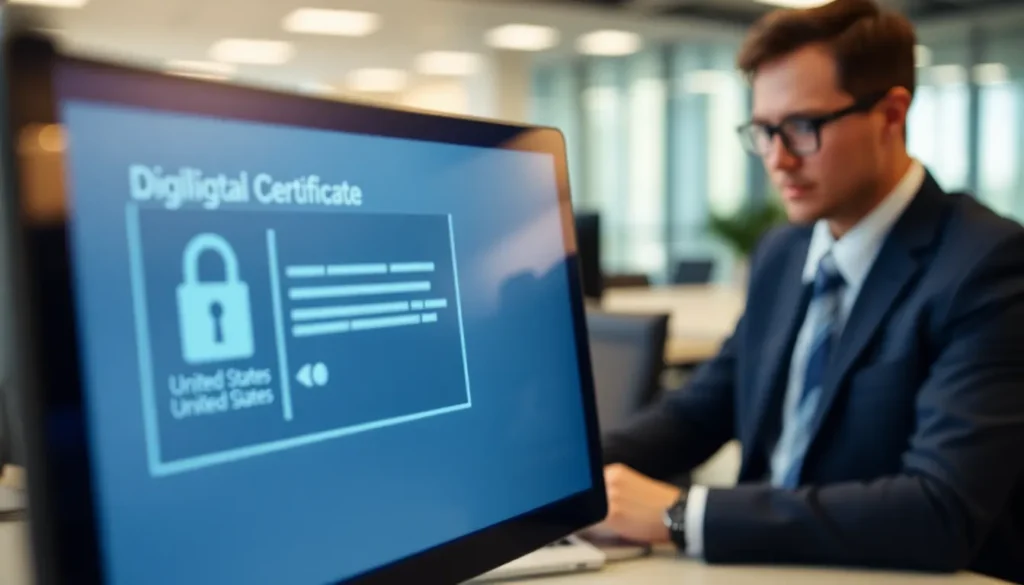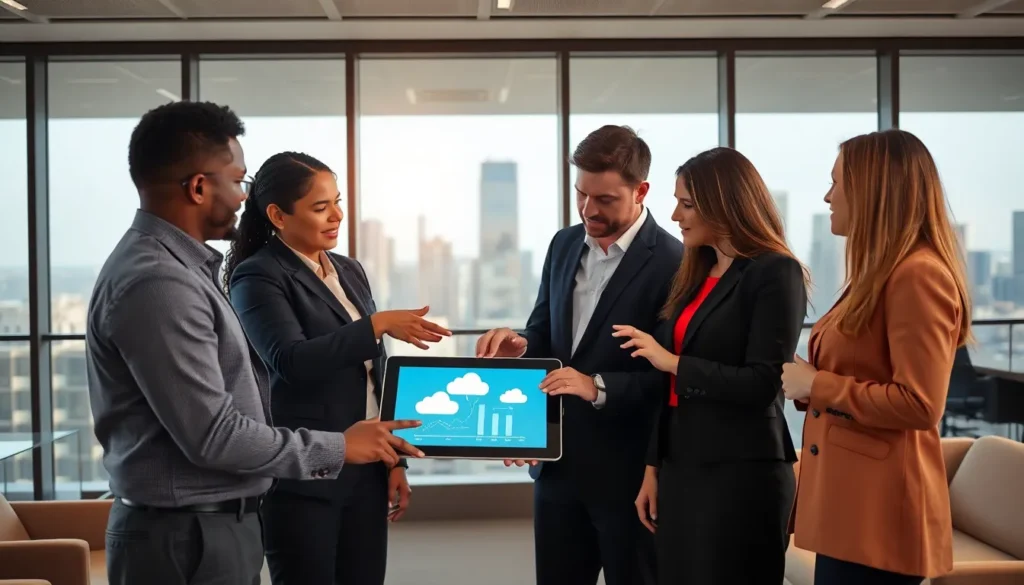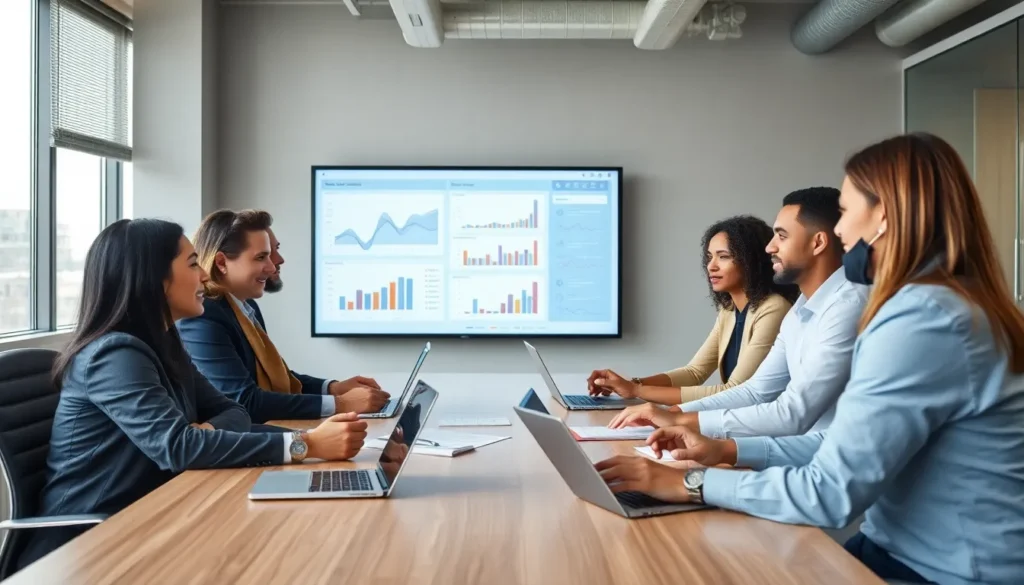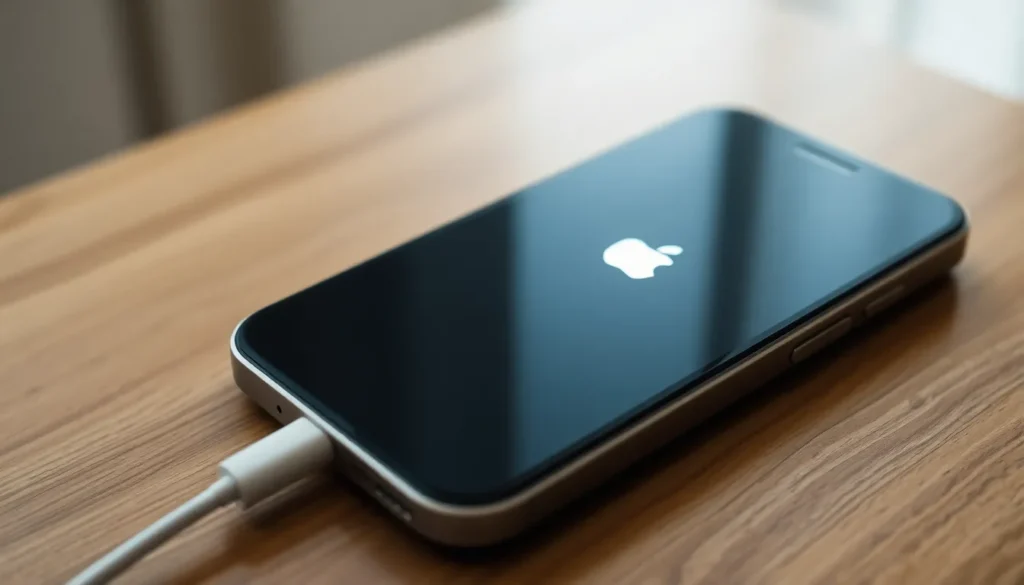Table of Contents
ToggleEver found yourself in a frantic search for a charger, only to wonder if your iPhone will power up while it’s taking a nap? You’re not alone. Many users have pondered this very question, and it turns out there’s more to the story than meets the eye. While it might seem like a simple yes or no, the truth is a bit more nuanced—and a little amusing.
Imagine your iPhone, blissfully unaware of the world, snuggled up in its powered-off state. You plug it in, and it’s like a cozy blanket for its battery. But does it actually wake up to charge? Spoiler alert: it does! This article dives into the quirks of iPhone charging, revealing what happens when that little screen goes dark. So sit tight and get ready to uncover the mysteries of charging your phone while it’s off.
Understanding iPhone Charging
Charging an iPhone involves specific processes and components that make it function effectively. Users often seek clarity on how these factors interact when an iPhone is powered off.
Basics of iPhone Charging
An iPhone charges through a combination of its battery, charging cable, and power source. When the device connects to a charger, it draws energy from the power source. Power flows through the charging cable into the port, where it meets the battery. While powered off, the device may still charge up, depending on how the battery management system operates. Many users find it helpful to connect their iPhone to a charger while it’s powered off to ensure a full battery before use.
Charging Components and Their Functions
The primary components involved in iPhone charging include the charging port, battery, and charging adapter. The charging port serves as the entry point for energy, connecting the iPhone to the charging cable. The battery stores electrical energy for later use, powering the device when it’s not connected. The charging adapter transforms the electrical current from the outlet into a suitable form for the iPhone. Each of these components plays a crucial role, ensuring efficient charging whether the iPhone is on or off.
Does iPhone Charge When Powered Off?
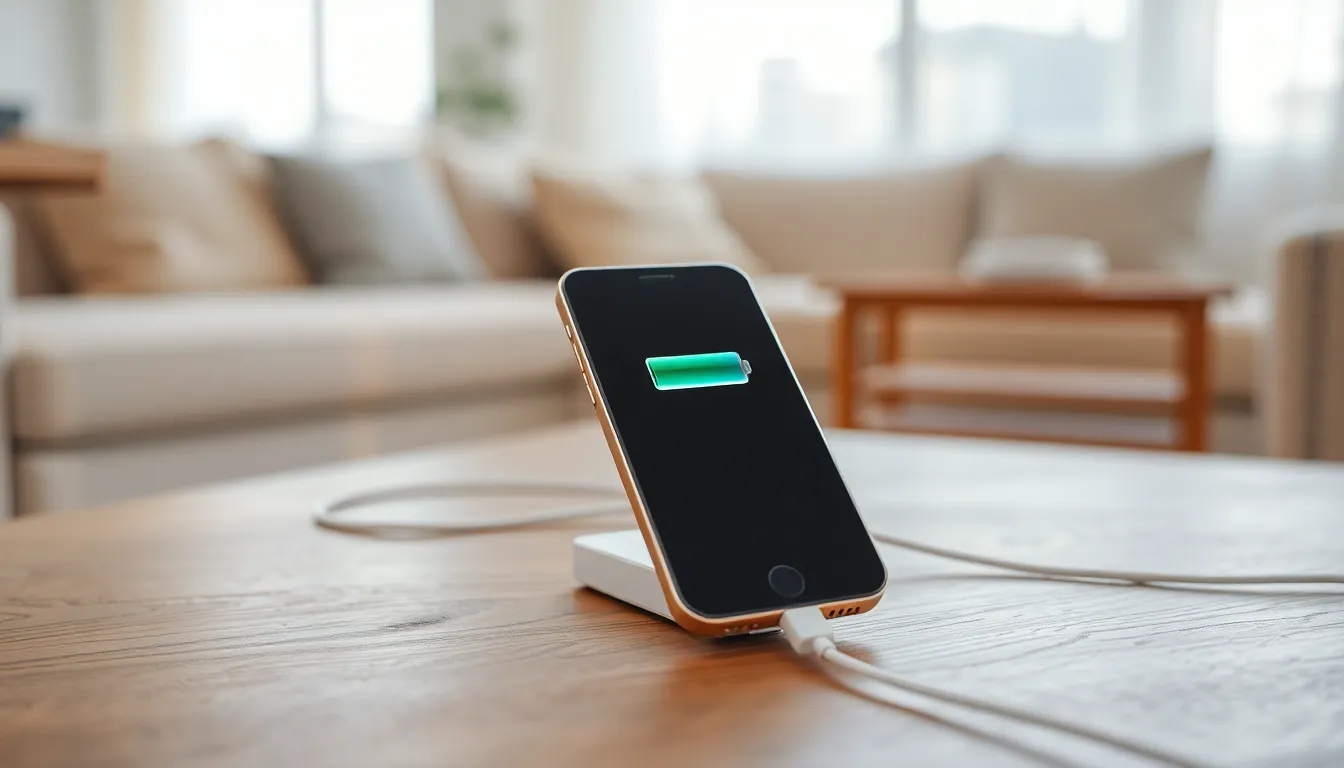
Most iPhones can charge when powered off. This ability allows users to conserve battery life while ensuring the device gains power during downtime.
User Experiences and Observations
Many users report that their devices charge effectively even when turned off. Observations indicate the battery icon appears once connected to a charger, signaling the charging process. Some individuals find that charging occurs faster in this state. Reports illustrate that resting the phone while charging may prevent background activities from draining battery percentage. Various users have differing experiences, but the consensus shows it’s generally possible to charge powered-off iPhones efficiently.
Evidence from Apple Documentation
Apple’s official support documents confirm that charging occurs when the phone is off. The battery management system activates even if the device appears unresponsive. Guidelines specify that if an iPhone is powered down, connecting it to a charger enables charging without interruption. Documentation emphasizes the role of the battery’s health in determining charging efficiency. Apple maintains that users can rely on this feature to ensure their device remains powered when not in use.
Factors Affecting Charging When Powered Off
Charging behavior of an iPhone when turned off depends on several factors. Battery health, cable quality, and adapter efficiency play significant roles in this process.
Battery Health Considerations
Battery health directly influences charging efficiency. Higher battery health typically ensures effective charging, while degraded batteries may lead to slower or less reliable charging, even when the device is off. Apple recommends maintaining battery health above 80% for optimal performance. Issues such as swelling or excessive wear can prevent proper charging. Users should periodically check battery health in settings to address any concerns promptly.
Charging Cable and Adapter Impacts
The quality of the charging cable and adapter significantly affects charging speed and efficiency. Using an Apple-certified cable and adapter ensures compatibility and optimal power delivery. Non-certified accessories can lead to slower charging or may not charge the device at all when powered off. Additionally, adapters with lower wattage may not provide adequate power to charge the iPhone efficiently. It’s crucial for users to select high-quality accessories to maximize the charging experience.
Tips for Efficient Charging
Efficient charging maximizes battery lifespan and performance. Users can follow several practices to ensure optimal charging.
Recommended Charging Practices
Charging devices overnight or during downtime proves effective. Users should connect their iPhones to an Apple-certified charger for maximum efficiency. Keeping the device away from heat sources enhances battery health. It’s beneficial to check that the charging port remains clean and free from debris. A charged battery generally does not need to reach 100% every time; maintaining it between 20% and 80% can extend longevity.
Avoiding Common Charging Mistakes
Many users overlook the quality of the charging cable. Non-certified cables can lead to inconsistent charging or even battery damage. Leaving a case on during charging may also trap heat, hindering efficiency. Users should refrain from using the iPhone while it charges, as this can slow down the process and increase heat. Avoiding extreme temperatures, both hot and cold, is crucial for maintaining battery health and ensuring effective charging.
Understanding how an iPhone charges while powered off can enhance user experience and device longevity. Users can rest assured that their iPhones will charge even when turned off thanks to the advanced battery management system. This feature not only ensures that the device remains powered but may also lead to faster charging in this state.
By following best practices like using certified cables and maintaining battery health, users can maximize charging efficiency. These insights empower users to make informed choices about their charging habits, ensuring their devices stay ready for use whenever needed.


